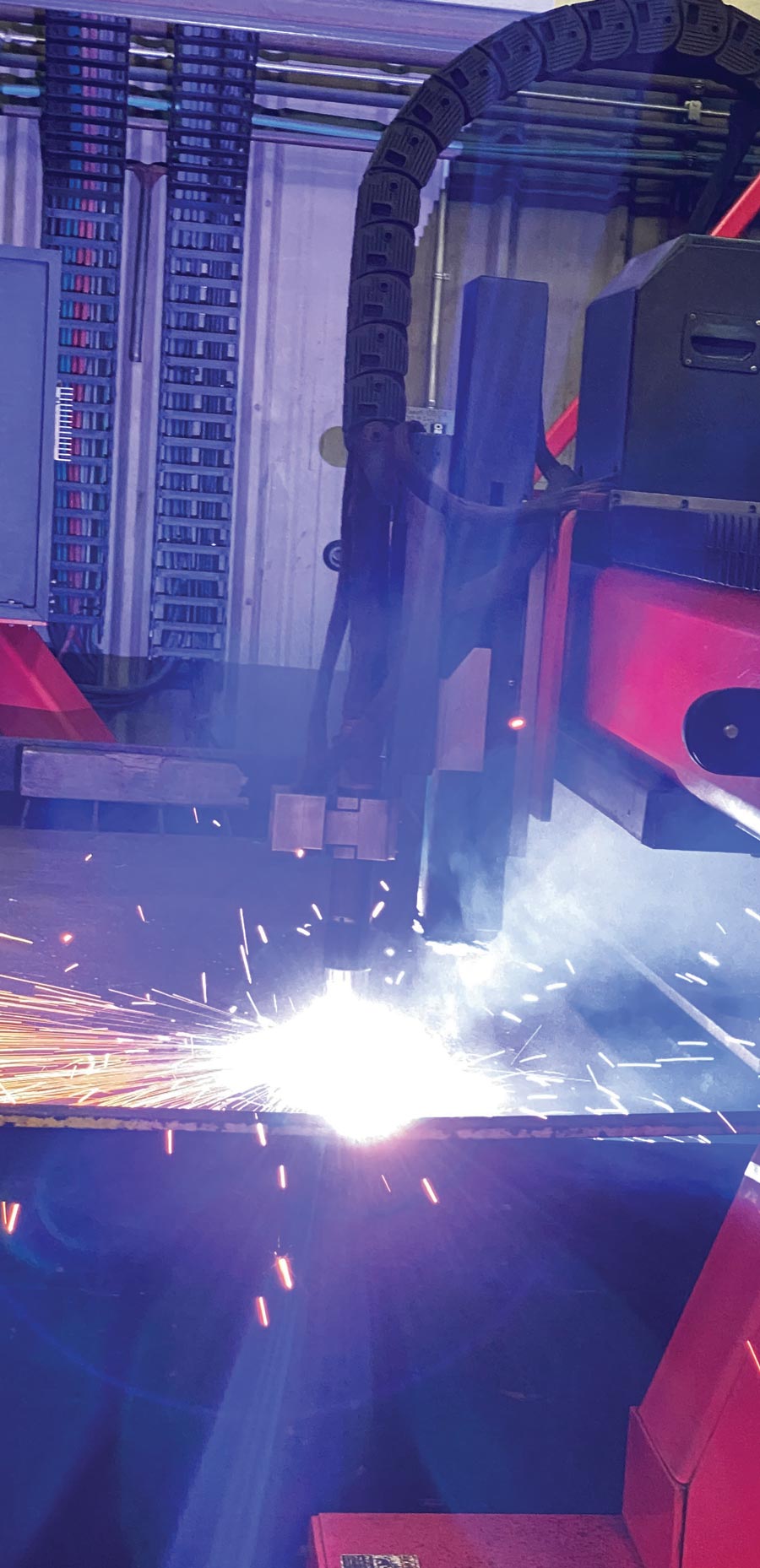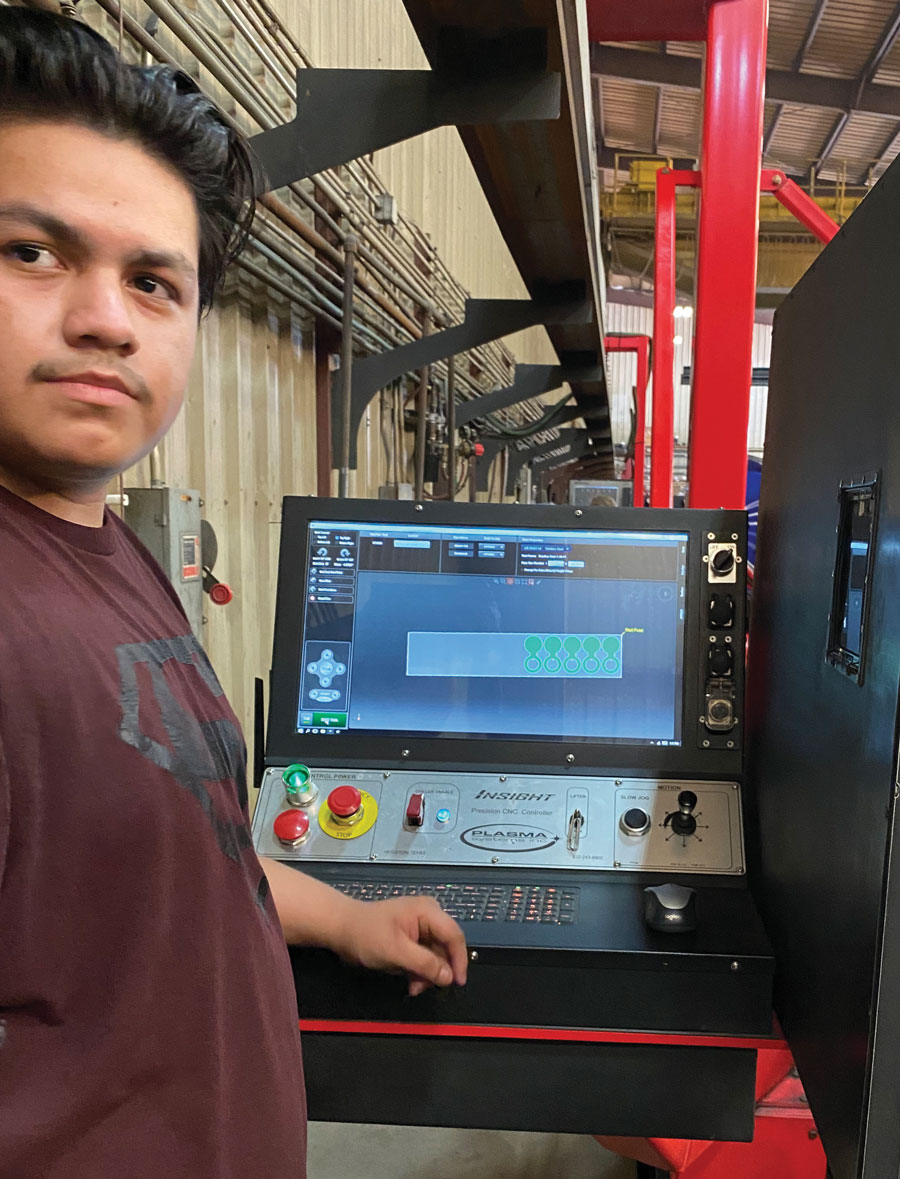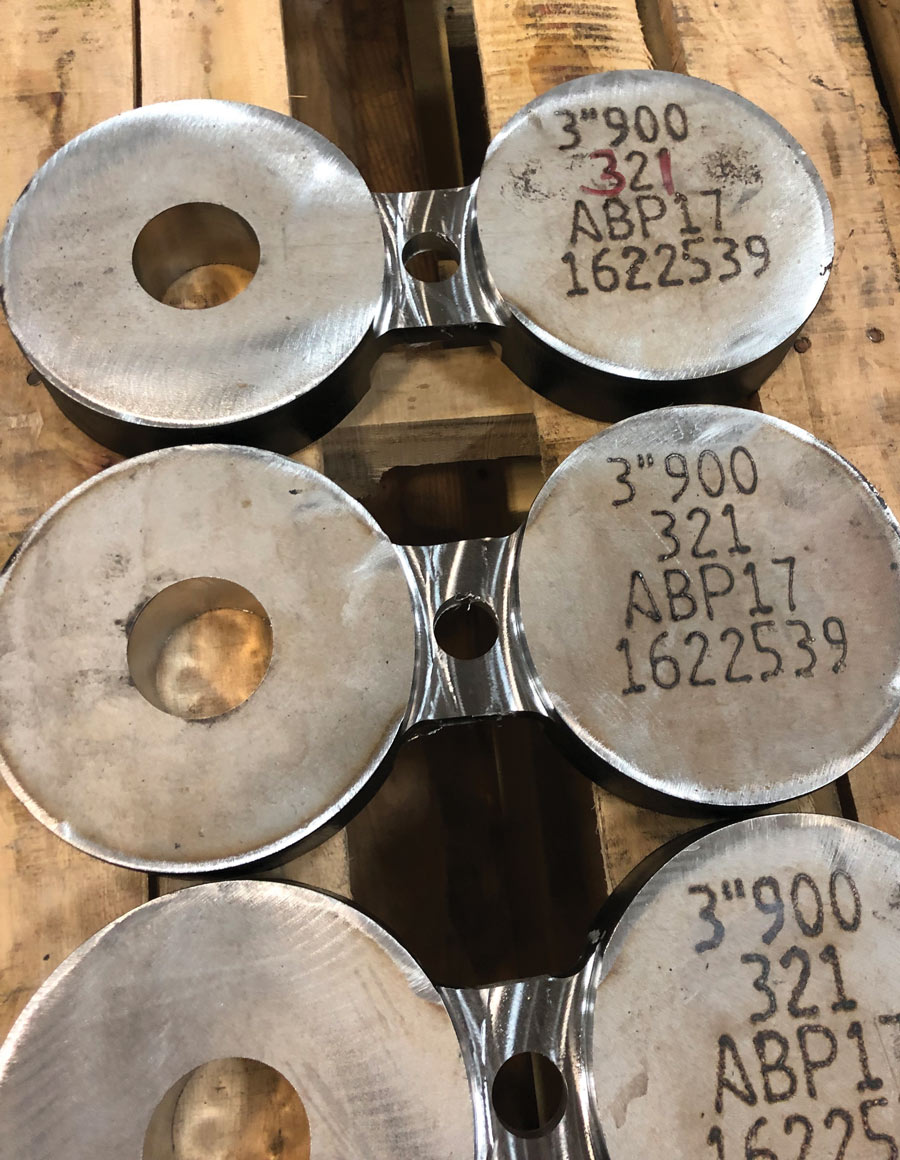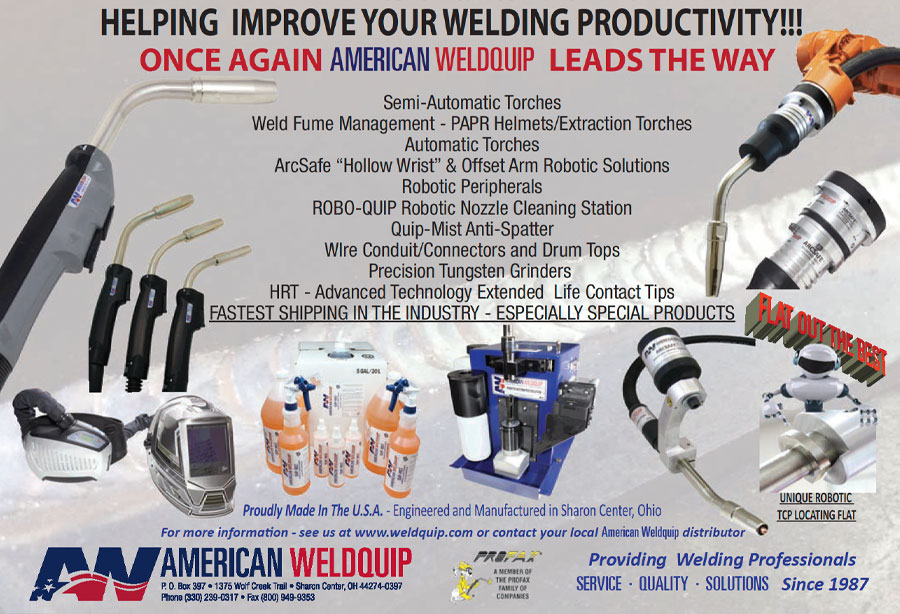ike Allen believes in do unto others as you would have them do to you. Dubbed the Golden Rule in the 17th century, the New Testament scripture is a simple idea about the ethical treatment of others. When Allen talks about his reasons for starting Precision Flange and Machine Inc. in 1989, he says, “I wanted to open a company, hire all-star welders and burning machine operators and treat them with the respect they deserve.”
In addition to cultivating a sound work environment and a strong customer base, Allen learned the value of a good vendor.
Growing the business meant 20-hour work days and jobs that required short delivery windows. The Houston manufacturer had to cut parts in house to support demand, prompting it to shop for a plasma cutter. That’s when Allen crossed paths with Houston-based Plasma Systems Inc. and found a like-minded partner in its president, Richard Keeton.
Precision Flange and Machine installed an 8-ft. by 20-ft. Plasma Systems burn table with a Hypertherm conventional 200-amp torch in 1993. The purchase cemented a relationship that, like the equipment, endures. The manufacturer added a Plasma Systems Hypertherm 400-amp plasma cutter with four oxy-fuel torches in 1999 followed by a 1200-amp plasma cutter with four oxy-fuel torches. In 2019, Precision Flange and Machine added a Plasma Systems high-definition, 800-amp plasma cutter with the new InSight CNC controller.
Products include Figure 8 and paddle blinds, paddle-type spacer and bleed rings and reinforcing pads along with a variety of flanges, flow measurement products and custom parts. “We have the best machinists and machines in our industry and we use the highest quality rough material available,” Allen notes, “but the plasma cutters feed our entire shop.”
Material and parts sizes are diverse. Stainless alloys, Hastelloy, Monel, chrome alloys, carbon steel and aluminum are regulars on the 800-amp, high-definition plasma. An operator might cut 4- to 6-in.-thick stainless, 6-in.-thick chrome grade 387, a spacer ring nearly 70 in. in diameter or parts as small as 1¾ in.
“We have to satisfy all sizes so we need to have a full-service line,” Allen explains. “We also have to be able to hold tight tolerances on parts.”
He has found Plasma Systems’ plasma cutters, particularly the new high definition machine, to be “extremely well built. [They] hold close tolerances and deliver very accurate, true cuts.” His customers have said “they are spoiled by the beautiful cuts we provide.”
Cut quality impacts secondary processes, too. “We have to machine the faces of some parts to receive a gasket. We find that once the part is sealed between two flanges, the seal is good. That starts with the right cut.”
The 800-amp, high-definition plasma cutter supports Precision Flange and Machine’s traceability requirements by marking material with key information like grade and heat number to match the mill test reports.
“Mill test reports are like a birth certificate for the metal,” Allen says. “If you lose traceability, you may as well scrap the part.”

“Primarily we use domestic steel,” he adds. “We like to support domestic mills, and demand for raw material to be melted here in the U.S. is growing among refineries.”
Software allows Precision Flange and Machine to perform CAD drawings on the machine and nest parts for efficiency.

A user-friendly format makes training sessions shorter, even for personnel with no experience. “The training we received on the new plasma machine was great,” says Allen. “Not all equipment suppliers are good at teaching personnel but we were up and running right away.”
 The plasma cutters are well built, hold close tolerances and deliver very accurate, true cuts.
The plasma cutters are well built, hold close tolerances and deliver very accurate, true cuts. 
“It is the same with service and support,” Keeton says. “We’re always looking for ways to help our customers. For example, we can look at a company’s machine from a cell phone and lots of times save them the cost of a service call.”

All four plasma cutters run eight to 10 hours a day. When incoming orders slowed due to the pandemic, Precision Flange and Machine took the dip in stride. “COVID-19 halted business temporarily but what I’ve found during the years is that, when you hit a slowdown, that’s the time to build stock. The only thing you’ll regret is that you didn’t produce more parts. It’s like money in the bank.” The strategy has also helped Allen retain personnel. “I’ve never had to lay anyone off,” he says.
